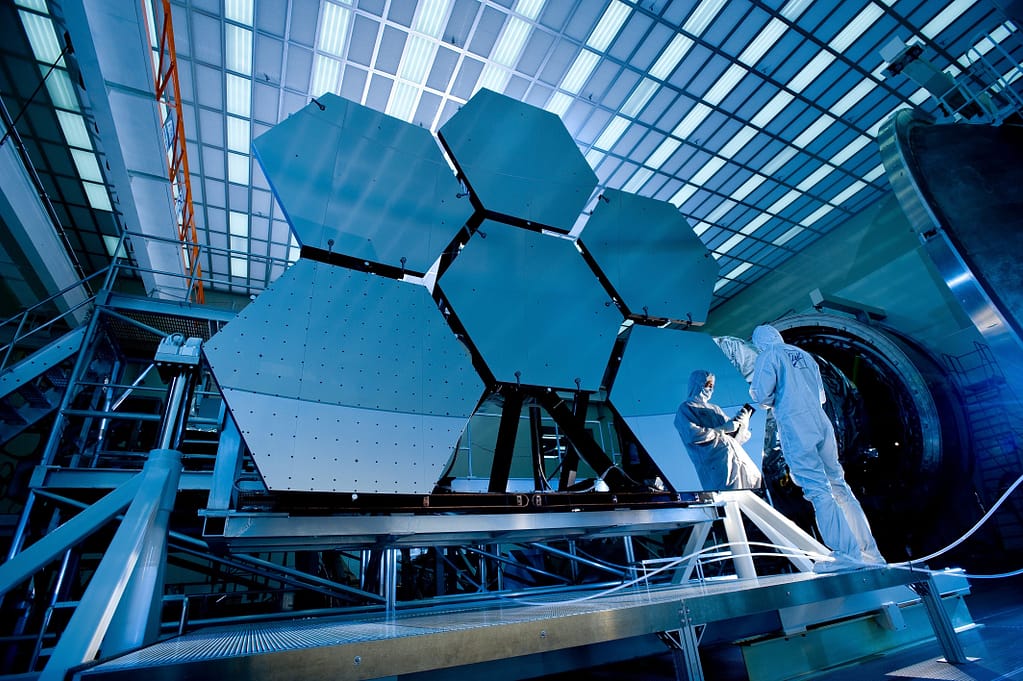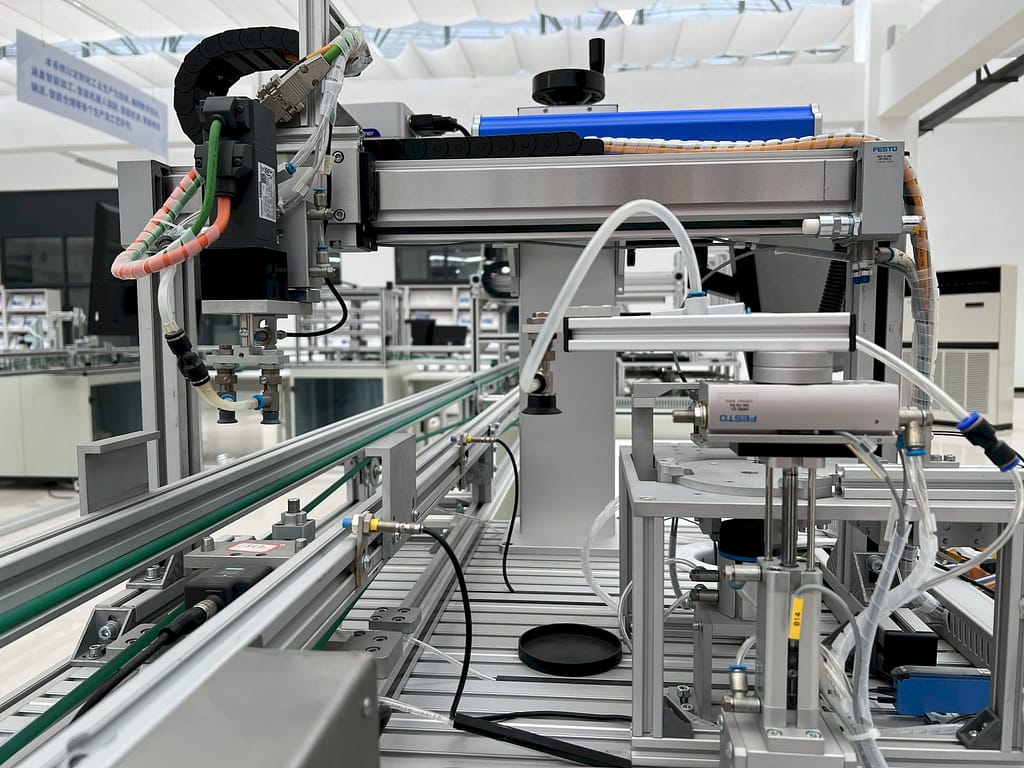Modern Advanced Manufacturing
Modern advanced manufacturing refers to the use of cutting-edge technologies, automation, and data analytics to streamline the production process and produce high-quality goods efficiently. It is an evolution of traditional manufacturing, characterized by a focus on innovation, sustainability, and flexibility. With advanced manufacturing, companies can create products faster, with less waste, and at a lower cost, while also meeting the increasing demands of customers for customization and personalized experiences. Whether it’s through 3D printing, robotics, or artificial intelligence, modern advanced manufacturing is transforming the way products are made and changing the face of the industry as we know it.

Digital Transformation in Manufacturing
Digital transformation in manufacturing refers to the integration of digital technology into all areas of a manufacturing organization, from design and development to production and supply chain management. The goal of digital transformation is to create a more connected, efficient, and flexible manufacturing process. That enables companies to respond to market demands and changes quickly and effectively. With the help of technologies such as;
- Internet of Things (IoT)
- Artificial intelligence (AI)
- Cloud computing
manufacturers can collect and analyze data in real time, streamline operations, and make informed decisions. This not only improves overall efficiency and productivity but also enables companies to create new revenue streams and customer experiences, driving growth and competitiveness in the digital age.
Additionally, digital transformation in manufacturing also enables companies to optimize their supply chain and increase collaboration with partners and suppliers. By leveraging digital tools, manufacturers can improve visibility and transparency throughout the supply chain. That will reduce costs and minimize the risk of disruptions. Furthermore, digital transformation enables manufacturers to better understand customer needs and preferences, leading to the development of more personalized and customized products. This can result in increased customer satisfaction and loyalty, and help companies to stand out in a competitive marketplace.
In short, digital transformation in manufacturing is an ongoing process that requires a commitment to innovation and a willingness to embrace new technologies and ways of working. By adopting a digital-first mindset and investing in the right technologies. Then manufacturers can improve their operations, increase their competitiveness, and position themselves for long-term success in the digital economy.
Industry 4.0 and Manufacturing
Industry 4.0, also known as the Fourth Industrial Revolution. That refers to the integration of digital, physical, and biological systems in the manufacturing process. It represents a major shift in the way products are designed, produced, and delivered, driven by advancements in technologies such as the Internet of Things (IoT), artificial intelligence (AI), and robotics. The goal of Industry 4.0 is to create smart factories. Those factories are highly connected, flexible, and capable of adapting to changing market demands.
In Industry 4.0, manufacturing processes are more efficient, sustainable, and responsive to customer needs. Thanks to the integration of digital technologies, machines can communicate with each other and with humans, exchanging real-time data and making decisions based on that data. This leads to a more streamlined production process, with less waste, and higher quality products. Furthermore, Industry 4.0 also enables manufacturers to create new business models, such as servitization. Where they offer customers a service rather than just a product. This shift is driving new levels of innovation and competitiveness in the manufacturing sector and helping companies to stay ahead in a rapidly changing business environment.
Additive Manufacturing as Modern Advance Manufacturing
Additive Manufacturing (AM) is a process of creating three-dimensional objects by adding layer upon layer of material. This is in contrast to traditional manufacturing techniques, which involve subtracting material from a larger block to create a desired shape.
AM techniques include;
- 3D printing
- Laser sintering
- Stereolithography
These techniques have the advantage of being able to produce complex shapes and geometries. Those geometries are difficult or impossible to achieve with traditional methods.
AM has many potential benefits for manufacturers, including reduced waste, faster production times, and lower costs. AM can also be used to produce low-volume, highly customized parts, and products, making it an ideal solution for industries such as aerospace, medical devices, and consumer goods.
Furthermore, AM also has the potential to revolutionize the supply chain, enabling manufacturers to produce parts on demand. These parts are closer to the point of use, reducing the need for costly inventory storage and transportation. With its many advantages, additive manufacturing is playing an increasingly important role in the manufacturing landscape. AM is also enabling companies to stay ahead of the curve in an ever-changing business environment.
Robotics and Automation in Modern Manufacturing
Robotics and automation are playing an increasingly important role in modern manufacturing. It is helping companies to improve efficiency, reduce costs, and increase competitiveness. Robotics is the use of robots to perform tasks such as assembly, inspection, and packaging. Then automation refers to the use of technology to control and streamline processes. These technologies are able to work in concert to produce high-quality products faster and with less waste.

The integration of robotics and automation in the manufacturing process has many benefits, including increased productivity, improved quality control, and reduced dependence on manual labor. Robotics and automation also have the potential to create safer work environments. Most of the time robots can perform dangerous or repetitive tasks, freeing up human workers for more specialized roles. Additionally, automation technologies can also enable real-time data collection and analysis. Then provides manufacturers with valuable insights into their operations and enables them to make informed decisions. With their many benefits, robotics, and automation are becoming increasingly important in the modern manufacturing landscape. It is helping companies to stay ahead of the curve in an ever-changing business environment.
Big Data and Analytics in Manufacturing

Big data and analytics in manufacturing use large, complex data sets to inform production decisions. It helps manufacturers improve their understanding of operations, increase efficiency, and drive innovation.
Big data and analytics collect and analyze data from various sources, including equipment, supply chains, and customer feedback, to identify trends and patterns. This information informs decisions on production, inventory, and product development.
Big data and analytics are transforming manufacturing by allowing data-driven decisions and providing a competitive advantage. Adoption is growing as manufacturers aim to stay ahead in a changing business world.
By using big data and analytics, manufacturers can improve competitiveness, enhance production, and drive growth in the digital age.
Cybersecurity in Modern Manufacturing
Cybersecurity in modern manufacturing is a critical concern, as manufacturers rely more and more on technology to control and manage their operations. With the increasing use of connected devices and the Internet of Things (IoT), there is a growing risk of cyberattacks. That could disrupt production, compromise sensitive information, or cause physical damage to machinery.
To protect against these threats, manufacturers must implement strong cybersecurity measures, such as firewalls, encryption, and regular software updates. They must also educate their employees on the importance of cybersecurity and best practices. As humans, the error can often be the weakest link in the security chain. By taking these steps, manufacturers can safeguard their operations, protect their customers and partners, and maintain their reputation as trusted providers of high-quality products.
Augmented Reality in Manufacturing
Augmented Reality (AR) enhances the real world with digital information and is becoming a game-changer in manufacturing. AR provides workers with on-demand information, helping them work more efficiently and accurately. For example, AR can display assembly instructions, part numbers, or quality control info right in front of the worker, reducing the need for manual reference materials.
AR also improves teamwork by allowing remote workers to share information and provide real-time assistance. And, it helps simulate and test manufacturing processes, catching potential problems early and improving product quality, and reducing downtime.
AR is transforming the manufacturing process, leading to greater efficiency and collaboration. It’s becoming a must-have for manufacturers looking to stay ahead in a rapidly changing landscape.
Internet of Things in Manufacturing
The Internet of Things (IoT) is transforming modern advanced manufacturing by connecting devices, sensors, and software. This technology collects and analyzes data from the factory floor, providing real-time insights into production processes and equipment performance.
IoT helps improve efficiency, reduce waste, and increase production speed. Sensors can monitor equipment, spotting issues before they cause downtime. IoT also tracks inventory and optimizes supply chains, reducing excess stock and enabling just-in-time delivery.
IoT is driving continuous improvement and informing decision-making in manufacturing. By adopting IoT technology, manufacturers gain a competitive edge and stay ahead in a rapidly changing business environment.
Smart Factories and Connected Manufacturing
Smart factories and connected manufacturing use advanced tech like IoT, AI, and robotics to create an automated and connected production environment. With real-time data, these factories optimize production, reduce waste, and improve efficiency.
Smart factories improve collaboration between machines, workers, and systems, streamlining production and boosting productivity. Connected machines share information on production, allowing workers to make data-driven decisions and drive continuous improvement.
Manufacturers are adopting smart factories and connected manufacturing to stay ahead in a changing business world. These technologies improve competitiveness, and product quality, and reduce downtime, securing a place in the global marketplace.
Cloud Computing in Modern Manufacturing
Cloud computing in manufacturing uses cloud-based technology to store, manage, and process production data and applications. It gives manufacturers access to powerful computing resources without expensive in-house IT.
Cloud computing helps improve production, drive continuous improvement, and streamline processes through easy access and analysis of production data. It also enables collaboration and offers scalability and improved security.
The use of cloud computing in manufacturing is growing as manufacturers stay ahead in a changing business environment. It enhances competitiveness, improves production processes, and drives growth in the digital age.
Modern Advanced Manufacturing is a term that refers to the latest and most innovative manufacturing methods and technologies being used in the industry today. This includes the integration of cutting-edge technologies such as Artificial Intelligence, Internet of Things (IoT), 3D Printing, Robotics, and Big Data Analytics, to name a few. The aim of Modern Advanced Manufacturing is to increase efficiency, reduce costs, improve product quality and create new business opportunities. This results in the creation of smart factories that operate with a high degree of automation, flexibility and customization. By embracing Modern Advanced Manufacturing, companies are better positioned to meet the growing demand for customized products and services, while staying ahead of the competition.



0 Comments